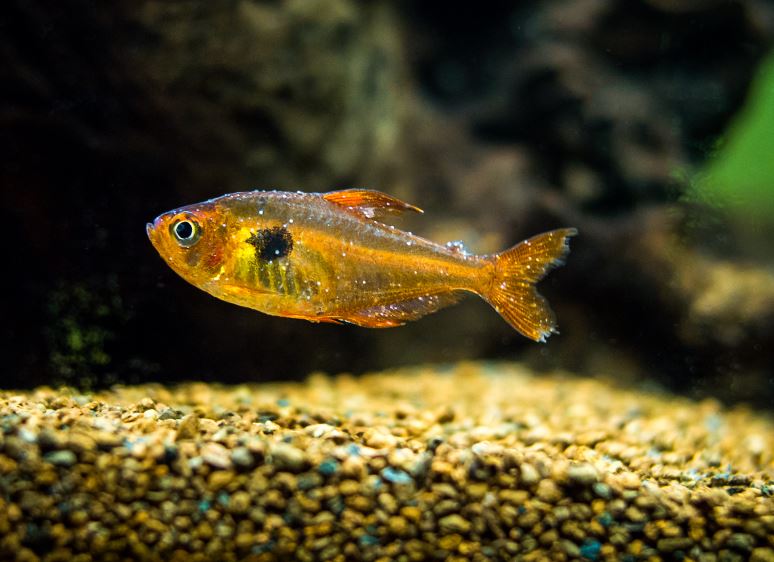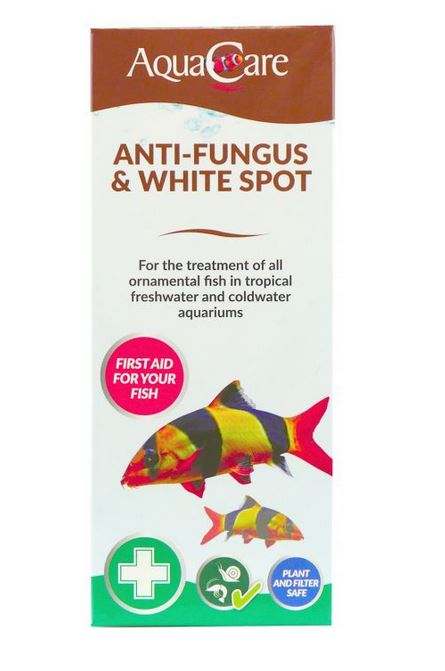Diseases In Fish: White Spot (Freshwater)
White Spot (Ichthyophthirius multifiliis) is one of the most common diseases in ornamental fish. In the UK it’s usually shorthanded to ‘spot’ or thanks to the global nature of the internet, the American nickname of ‘ick/ich’ is occasionally used.
The infection occurs when the immune system of the fish is weakened due to stress, such as temperature fluctuations, compatibility issues, or introduction into a new environment. Infected fish exhibit small white granular lesions on the gills and fins which can spread all over the body, giving the appearance of a sprinkling of salt. Initial infection can often be seen on the fins before spreading to the body.
Although infections are often seen in newly added fish, this can be due to the stresses of transport and the challenges of a new home lowering their immune system and exposing them to parasites present in established aquaria. Their settled tankmates are better able to ward off these threats and so remain free of symptoms, this is especially the case where nitrate levels are high. Background populations of these parasites can be found in detritus and organic wastes in many systems, so good hygiene and maintenance is important in preventing outbreaks.
Infected individuals will often clamp their fins and attempt to remove the parasites by rubbing themselves against objects. Fish which have a particularly pronounced infection on the gills will quickly become listless and lose weight rapidly. The disease is caused by a protozoan parasite which feeds within the skin and tissues of the fish covered by the fish’s mucus - largely protecting the parasite from medications.
The only way to stop the infection is to treat the disease over a number of days, as nearly every parasite will have matured and left the protection of the fish’s skin during this period in order to multiply and create juveniles. These juvenile parasites are vulnerable when they try to find new hosts, as they are then free-swimming and can be killed by appropriate treatment, thus interrupting the parasite’s lifecycle and ensuring that no new infections can occur.
Raising the temperature of the aquarium can help speed up this lifecycle and boost the fish’s immune system but this will also affect the availability of oxygen at a time when gill function is compromised.
Adding additional aeration in the form of an air stone can be beneficial, especially for fish which may not appreciate the extra current generated by stronger water movement due to their reduced vigour. As some of the chemicals used in medications can lower dissolved oxygen levels, this is good practice as part of a standard treatment plan. Water testing is also vital to determine the source of stress - no amount of medication will cure problems caused by poor water quality.
Bear in mind that in the early days of the hobby this disease was considered lethal, despite home remedies such as salt being widely available. We would urge any hobbyist to use an effective medication at the earliest opportunity as part of the standard duty of care towards their pets.
As the action of the parasites causes damage to the host, a treatment containing anti fungal agents will promote healing and protect against secondary infection.
Be aware that chemical media such as carbon will absorb some or all of the active ingredients of medications and should be removed before use.
AquaCare Anti-Fungus & White Spot
For the treatment of all ornamental fish in tropical freshwater and cold water aquariums.
Anti-Fungus & White Spot is a 7-day course of treatment which will eradicate all stages of White Spot and fungus.
Diagnosis Guide:
The fish have numerous white spots, like grains of salt, scattered on the body and fins.
Poor water quality can be the primary cause of stress and disease in fish, so always use aquarium test kits to monitor your water conditions.
Directions:
1) If you require help to calculate the volume of water to be treated please ask at your nearest Maidenhead Aquatics store. Note that aquarium decor such as rock work and gravel will impact on your tank’s capacity by displacing water - failing to take this into account can lead to overdosing.
2) Shake the bottle thoroughly before use.
3) Mix the required dose of treatment with 1 litre of aquarium water.
4) Add this diluted mix slowly to the aquarium where water movement will ensure good circulation and rapid distribution.
5) Repeat dose every other day for 7 days (ie. days 1, 3, 5 and 7).
6) Treatment can be repeated 7 to 10 days after the last dose. If repeat treatment is required ensure diagnosis is correct, check water quality and carry out a partial water change between treatments (up to 25%).
Dose: 10ml to 200 litres of aquarium water
Repeat the dose every other day for 7 days
When used at the recommended dosage rates, this product is safe to use with invertebrates such as shrimps and snails.
Use with Freshwater stingrays (Potamotrygon) is not recommended. For sensitive species, doses can be administered as two halves added several hours apart to ensure the safest dilution rate. Deliberate under-dosing is not recommended, as this can encourage resistance in target pathogens.




